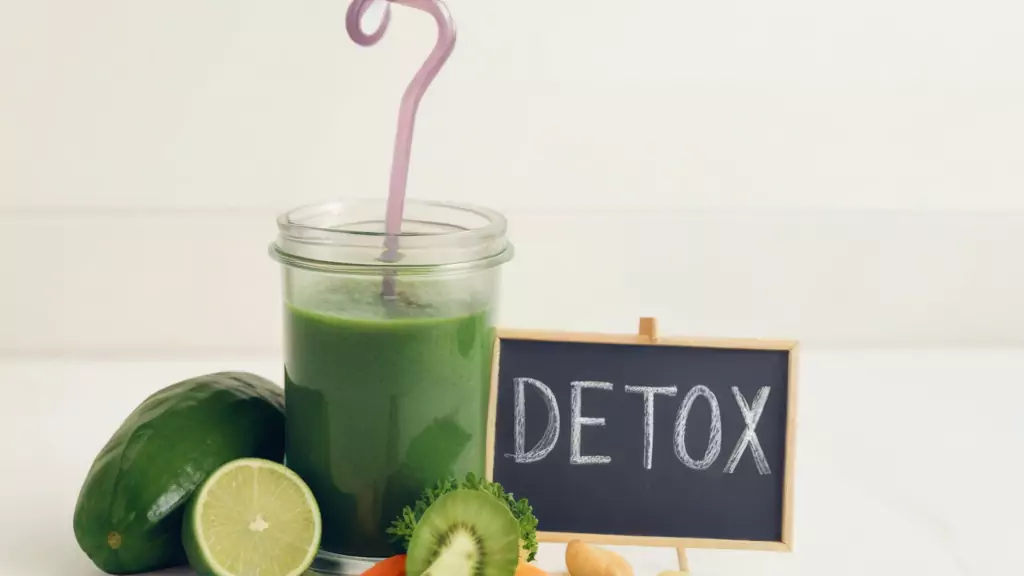Somatic Detox Diet | Jennifer Aniston Diet Plan
The somatic detox diet is a holistic approach that blends somatic exercises with dietary changes to enhance health and wellness. It aims to cleanse the body while fostering both mental and physical balance. Through mindfulness and gentle movements, this diet creates an environment where well-being can flourish.
Anti-inflammatory foods are central to supporting the body’s natural detoxification process. By combining these elements, the somatic detox diet works to harmonize the body’s systems. It not only detoxifies but also promotes rejuvenation and overall vitality.
At the core of the somatic detox diet is the concept of somatic exercises, which emphasize slow, mindful movements that bring about heightened body awareness. These exercises allow individuals to release physical tension, realign postures, and build a deeper connection with their bodily sensations.
These concepts work in concert with nutritious and detoxifying meals to help the body heal from long-term stress, enhance digestion, and lower inflammation.
In the following sections, we’ll dive deeper into how the somatic detox diet works, its specific benefits, and how it can be tailored to suit individual needs, particularly during stages of life like menopause.
Principles of the Somatic Detox Diet
Somatic Exercises
Goal of these exercises is to increase awareness of the body’s movements. Somatic exercises use gentle, mindful movements to release built-up tension and improve alignment. These exercises help restore fluidity in daily activities. By promoting better circulation, they support the body’s detoxification process.
Somatic practices also reduce muscle stiffness, contributing to overall physical ease. Additionally, they enhance the functioning of the nervous system, further supporting the body’s health.
Dietary Emphasis
The diet aspect of the somatic detox diet focuses on eating whole, unprocessed foods that aid in detoxification and reduce inflammation. The primary dietary components include:
- Leafy Greens: Rich in antioxidants and chlorophyll, which help cleanse the liver and fight oxidative stress.
- Whole Grains: Such as quinoa, oats, and brown rice, which provide sustained energy and improve digestion through high fiber content.
- Healthy Fats: From sources like avocados, nuts, and seeds, which support hormonal balance and reduce inflammation.
- Hydration: Drinking adequate amounts of water, along with herbal teas, helps flush out toxins and supports the digestive system.
Somatic Detox Diet Menopause
Menopause brings a host of physical and emotional changes, often leading to discomfort such as weight gain, hot flashes, mood swings, and difficulty sleeping.
The somatic detox diet offers a tailored solution to these menopause symptoms by integrating hormone-balancing foods with mindful movement. By focusing on nutrition and exercise, the diet helps to ease menopause-related challenges naturally and holistically.
Here’s how a somatic detox diet for menopause works:
Balancing Hormones
Menopause causes fluctuations in estrogen and progesterone levels, often leading to discomfort. The somatic detox diet incorporates foods that help stabilize these hormones, such as:
- Leafy Greens: Nutrient-rich foods including arugula, spinach, and kale support hormonal balance.
- Whole Grains: Brown rice, oats, and barley are complex carbohydrates that regulate blood sugar, helping mitigate mood swings.
- Healthy Fats: Omega-3-rich foods like walnuts, flaxseeds, and fatty fish support hormone production and reduce inflammation.
Promoting Detoxification
As hormonal changes impact the body’s detox pathways, supporting the liver and kidneys becomes crucial. The diet prioritizes foods like cruciferous vegetables (broccoli, Brussels sprouts) and lemons, which are known to enhance the liver’s detoxification process.
Stress and Emotional Regulation
Menopause often amplifies emotional fluctuations, leading to stress. Through somatic exercises, which encourage mindful movement and meditation, the diet helps to reduce stress levels and provide emotional clarity.
Somatic Detox Diet Plan for Menopause Sample
A typical daily meal plan on the somatic detox diet would look like this:
- Breakfast: A smoothie made with spinach, kale, a handful of blueberries, flaxseeds, and a scoop of plant-based protein powder.
- Lunch: A quinoa salad mixed with roasted sweet potatoes, chickpeas, cucumber, and topped with a lemon-tahini dressing.
- Snack: A handful of raw almonds and an apple.
- Dinner: Grilled salmon with a side of steamed broccoli and roasted carrots.
- Hydration: Throughout the day, drink plenty of water, alongside herbal teas such as dandelion root and green tea.
This plan not only supports detoxification but also ensures that the body receives essential nutrients that aid in hormonal balance and overall well-being.
Benefits of the Somatic Detox Diet
Visit : To Get Somatic Guide
- Enhanced Body Awareness: Through the practice of somatic exercises, individuals can cultivate a deeper connection with their bodies. This heightened awareness allows for better posture, less tension, and greater physical and emotional harmony.
- Reduced Inflammation: The diet prioritizes anti-inflammatory foods, such as leafy greens, fatty fish, and nuts, which reduce chronic inflammation. This is especially beneficial for individuals dealing with joint pain or autoimmune issues.
- Improved Digestion: Whole foods rich in fiber, such as whole grains and vegetables, improve gut health. A healthy gut enhances digestion, reduces bloating, and optimizes the body’s ability to detoxify naturally.
- Stress Reduction: Somatic exercises, combined with mindful eating practices, can reduce stress levels. By focusing on gentle movements and conscious breathing, the body’s parasympathetic nervous system is activated, promoting relaxation and reducing anxiety.
- Weight Management: For individuals experiencing weight gain due to stress, hormonal changes, or poor diet, the somatic detox diet can help. The emphasis on whole, nutrient-dense foods, along with mindful movements, promotes natural weight loss and a better relationship with food.
Somatic Detox Diet Reviews
Individuals who have tried the somatic detox diet often report profound improvements in their overall well-being. Here are some of the common benefits shared by those who have adopted the diet:
- Increased Mental Clarity: Many people find that they feel mentally sharper after starting the somatic detox diet. The combination of clean eating and somatic exercises helps to clear mental fog and improve focus.
- Reduced Chronic Pain: Individuals dealing with long-standing pain issues, such as back or joint pain, often find relief through somatic exercises and the anti-inflammatory foods included in the diet.
- Heightened Body Awareness: One of the unique aspects of this diet is its emphasis on becoming more attuned to the body. Users frequently mention feeling more “in tune” with their bodies, noticing improvements in posture, mobility, and flexibility.
- Better Mood and Emotional Regulation: The somatic detox diet encourages practices that enhance emotional well-being, from mindful movement to consuming foods that support neurotransmitter function.
However, like any diet, results vary depending on individual adherence and personal health conditions. It’s essential to consult with a healthcare provider before embarking on any new dietary regimen, particularly for individuals with pre-existing medical conditions.
Celebrity Influence on Holistic Wellness
In recent years, celebrities have increasingly embraced holistic wellness practices, bringing them into the mainstream. Stars like Gwyneth Paltrow and Jennifer Aniston are well-known advocates for detox diets and overall wellness. Their dedication to mindful living and clean eating has inspired many people to explore the benefits of holistic approaches to health, including the somatic detox diet.
Holistic Wellness Among Celebrities
Gwyneth Paltrow and Jennifer Aniston are known for their dedication to balanced living through detox programs and organic eating. Both actresses incorporate mindfulness exercises into their wellness routines.
Paltrow, through her wellness brand Goop, has become a strong advocate for detox diets. She frequently highlights the significance of cleansing the body from harmful toxins. Aniston also emphasizes the importance of maintaining a healthy lifestyle through mindful practices and clean eating. Jennifer Aniston, on the other hand, is a champion of regular exercise and nutrient-dense, anti-inflammatory diets.
These celebrities, along with others, are not just focused on physical appearance but also on mental clarity, emotional well-being, and reducing stress through natural methods. The somatic detox diet aligns with these values by focusing on gentle movements and mindful eating to promote long-term health.
Why Celebrities Love Mindful Movement and Detox
It’s no surprise that celebrities turn to practices like the somatic detox diet. In fact, the stress-relieving, tension-reducing benefits of somatic exercises resonate with high-profile individuals who lead hectic lifestyles. Combining these exercises with mindful, detoxifying eating habits allows them to stay grounded, energized, and connected to their bodies.
Gwyneth Paltrow and Jennifer Aniston are famous for prioritizing health and well-being. They emphasize the importance of maintaining both physical and emotional balance. The somatic detox diet combines mindful eating with body-centered exercises for a holistic approach. This approach supports those aiming for long-term wellness. It also aligns with the values of individuals committed to sustained health practices.
Side Effects and How to Manage Them
The somatic detox diet is designed to enhance overall well-being by combining mindful eating with gentle somatic exercises. The somatic detox diet provides benefits such as promoting detoxification, reducing stress, and increasing body awareness. However, it is vital to be aware of the possible negative consequences.
Like any dietary change, this approach may not be suitable for everyone. If not followed correctly, the diet could lead to temporary discomfort or longer-lasting effects. It’s important to approach the somatic detox diet mindfully to avoid any potential issues.
Side Effects of the Somatic Detox Diet
Nutrient Deficiencies
One of the most common risks with restrictive diets is nutrient deficiency. An overly restrictive somatic detox diet may result in deficiencies in essential vitamins and minerals. Eliminating certain food groups can lead to imbalances in nutrient intake.
For instance, if the diet lacks variety, it may fail to provide all the necessary nutrients. A primarily plant-based diet without careful planning might increase the risk of missing key vitamins and minerals. This can lead to potential health issues if the diet is not properly balanced.
- Iron: Important for oxygen transport in the blood. Deficiency could lead to fatigue or anemia.
- Vitamin B12: Vitamin B12 is essential for nerve function and red blood cell formation. This vitamin is mostly found in animal products, so plant-based detox diets could lack adequate amounts.
- Calcium: Necessary for bone health. If dairy products or fortified plant-based alternatives are limited, calcium intake could be insufficient.
To avoid these potential deficiencies, it’s crucial to ensure that the somatic detox diet includes a variety of foods that provide all essential nutrients. Incorporating nutrient-dense vegetables, fruits, grains, and protein sources—whether from plants or animals—can help maintain balanced nutrition.
Digestive Issues
Sudden changes in diet, particularly those involving a significant increase in fiber intake, can lead to digestive discomfort. The somatic detox diet encourages the consumption of whole foods rich in fiber, such as fruits, vegetables, and whole grains, which support healthy digestion.
However, if you suddenly shift to a high-fiber diet, your body may struggle to adjust, leading to issues like:
- Bloating: An uncomfortable buildup of gas in the digestive tract.
- Gas: Caused by the fermentation of fiber by gut bacteria.
- Constipation or Diarrhea: Too much fiber without adequate water intake can result in constipation, while too rapid an increase can cause diarrhea.
The key to avoiding these digestive issues is gradual adaptation. Instead of drastically increasing your fiber intake overnight, slowly incorporate more fiber-rich foods into your diet and ensure you drink plenty of water to support digestion.
Fatigue
Fatigue is another potential side effect of the somatic detox diet, especially if the diet is too low in calories or certain macronutrients like carbohydrates or fats. This fatigue could be due to:
- Low-Calorie Intake: If you’re restricting your calories too much, your body may not have enough energy to function optimally, leading to fatigue and lethargy.
- Low Carbohydrate Intake: Carbohydrates are the body’s primary source of energy. Reducing carbs too much can leave you feeling drained.
- Low Protein or Fat Intake: Both protein and fat are essential for energy production, muscle repair, and hormone regulation. Skimping on these macronutrients could lead to sluggishness.
To avoid fatigue, it’s important to ensure that your somatic detox diet is balanced and provides adequate calories and a variety of macronutrients. Specifically, incorporating complex carbohydrates like whole grains, along with healthy fats and proteins, can help sustain energy levels throughout the day. This balanced approach will support your overall well-being and vitality.
Detox Symptoms
When starting the somatic detox diet, it’s not uncommon to experience temporary discomforts often referred to as “detox symptoms.” These symptoms arise as your body adjusts to the new diet and begins to eliminate toxins stored in fat cells. Common detox symptoms include:
- Headaches: Often caused by sugar or caffeine withdrawal.
- Irritability: Emotional ups and downs as the body adjusts to the new regimen.
- Skin Breakouts: The skin, being a major detoxification organ, may temporarily break out as toxins are expelled.
These detox symptoms are usually short-lived and should subside as the body adjusts to the diet. However, if symptoms persist for more than a few days, it may be necessary to re-evaluate your approach to the somatic detox diet or consult a healthcare professional.
Interaction with Medications
Certain foods or supplements recommended in the somatic detox diet may interact with medications. For example, some detox teas or herbal supplements could affect the way your body metabolizes certain drugs. Specific foods like grapefruit are known to interfere with the liver’s ability to process medications properly. It’s especially important to be cautious if you’re taking medications for chronic conditions such as:
- Blood pressure medication
- Blood thinners
- Diabetes medication
Before starting the somatic detox diet, consult with a healthcare provider to ensure there are no potential interactions between your current medications and any new dietary changes or supplements.
Tips to Minimize Side Effects
While side effects from the somatic detox diet are possible, there are several steps you can take to minimize discomfort and ensure a safe, balanced experience. Here are some helpful tips:
Gradual Changes
Instead of making drastic changes to your diet overnight, introduce new foods and practices gradually. This allows your body to adjust without being overwhelmed. If you’re adding more fiber-rich foods, increase your intake slowly to prevent digestive issues. Similarly, if you’re eliminating certain foods, do so one at a time rather than all at once.
Balanced Nutrition
Ensure that your somatic detox diet includes a variety of foods from different food groups to avoid nutrient deficiencies. Focus on incorporating plenty of vegetables, fruits, lean proteins, whole grains, and healthy fats. Ultimately, balance is key to preventing fatigue, mood swings, and long-term nutrient deficiencies.
Stay Hydrated
Drinking plenty of water is essential when following any detox plan. Staying hydrated not only helps the body flush out toxins but also prevents issues like bloating, constipation, and headaches. Aim to drink at least 8-10 glasses of water a day, and consider herbal teas that promote detoxification.
Listen to Your Body
Pay attention to how your body responds to the somatic detox diet. If you start experiencing persistent fatigue, headaches, or digestive issues, it may be time to tweak your approach. Sometimes, even the healthiest diets may not suit everyone, so adjust as needed and make sure you’re feeling nourished and energized.
Consult a Professional
It’s important to consult a healthcare provider before starting the somatic detox diet. This is especially crucial if you have underlying health conditions or take medications. A professional can guide you in designing a diet that suits your unique health needs. They can also help you avoid potential issues like nutrient deficiencies. Additionally, they can ensure there are no interactions between the diet and any medications you may be taking.
Will You Take This?
The somatic detox diet is a unique approach to wellness that combines mindful eating with somatic exercises to promote holistic health.
However, like any diet, it can present challenges if not approached carefully. Nutrient deficiencies, digestive discomfort, fatigue, detox symptoms, and potential interactions with medications are all possible side effects that individuals may experience.
Introducing dietary changes gradually is key to minimizing potential risks. Ensuring balanced nutrition is essential for maintaining overall health during the process. Staying hydrated also plays an important role in supporting the body’s detoxification.
It’s crucial to listen to your body’s signals and adjust as needed. Consulting a healthcare provider or registered dietitian before starting the somatic detox diet is strongly advised, especially for those with preexisting conditions or taking medications.
By taking a mindful, balanced approach, you can enjoy the many benefits of the somatic detox diet—including enhanced body awareness, reduced stress, and improved detoxification—while ensuring that your health and well-being are prioritized.




